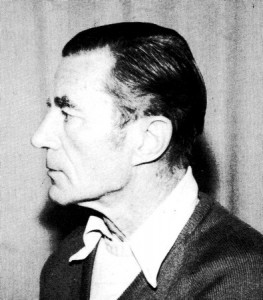 Although he was born in Kent, in 1911, William Hart-Smith is considered one of Australia and New Zealand’s more important poets and writers. His youth was spent in England where he undertook most of his education before the family moved to New Zealand in 1924. At the age of just fifteen he began work as a radio mechanic, a job he kept until he decided to move to Australia in 1936 where he found employment with the burgeoning Australian Broadcasting Commission.
Although he was born in Kent, in 1911, William Hart-Smith is considered one of Australia and New Zealand’s more important poets and writers. His youth was spent in England where he undertook most of his education before the family moved to New Zealand in 1924. At the age of just fifteen he began work as a radio mechanic, a job he kept until he decided to move to Australia in 1936 where he found employment with the burgeoning Australian Broadcasting Commission.
It wasn’t until after he had returned from a short period of army service that Hart-Smith seriously began to think about writing after spending a short period in the Northern Territory. He became involved in the Jindyworobak Movement that sought to illuminate neglected indigenous Australian culture and had been set up by Rex Ingamells in 1937.
It was this movement that published Hart-Smith’s first and most well-known work, Columbus Goes West, which came out in 1943. He always claimed that he began to write poetry seriously only when he came to Australia and that he had largely been influenced by the countryside and people that he met. His first poem, The Poplar, was published in 1936 by the Auckland Star.
Although he was attracted to the Jindyworobak Movement because they were the first to publish his works, Hart-Smith was never completely happy with the restrictions it entailed. As one of the more competent poets of the movement, he was able to contribute a significant body of work to it. Over his lifetime he published over 700 poems in various publications but only produced nine books over the years.

Perhaps his most important work was Christopher Columbus which was published in 1948 and consisted of some 48 poems. Whilst each verse can be read in isolation, the collection was designed to build into a narrative poem that is noted for its simplicity, precise imagery and wide ranging insight. The collection received very favorable reviews at the time but fell out of popularity by the time the 60s came around and has only now recently been rediscovered as an Australian treasure.
After the 40s and 50s, Hart-Smith largely faded from public attention, perhaps because he was submitting his poems to lesser known journals but also because his later work, according to some, showed a fair decline in his poetic prowess. This has been disputed in recent years with poems such as Monkey Mia and Death of a Craftsman given as examples.

Whilst Hart-Smith spent much of his time in Australia, he returned on several occasions to New Zealand and spent his time, when not writing, teaching adults. His last major published work was the collection Poems of Discovery that came out in 1959. Even into his later years, he continued to write poetry and received the Patrick White Award in 1987. Hart-Smith died at the age of 79 in 1990.

